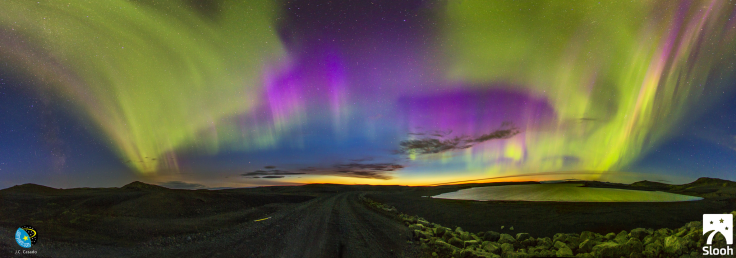Geomagnetic Storm May Impact Earth This Friday Following Fourth Of July Coronal Mass Ejection

KEY POINTS
- An "Earth-directed component" of the July 4 CME may arrive Friday
- A G1 geomagnetic storm could cause fluctuations in the power grid, albeit weak ones
- There are chances the auroras will appear
A geomagnetic storm is on its way to Earth, with a possible impact on Friday. This comes after the Sun belched out a coronal mass ejection (CME) on the Fourth of July.
The CME occurred "in the early UTC hours" of July 4, according to the Geomagnetic Storm Watch from the National Oceanic and Atmospheric Administration's (NOAA) Space Weather Prediction Center (SWPC).
CMEs are expulsions of plasma from the Sun that can eject "billions of tons of coronal material." Some CMEs are directed toward our planet. The fastest ones can reach us in just a matter of 15 to 18 hours, while the slower ones would take several days.
In the case of the Fourth of July CME, an "Earth-directed component" is expected to arrive on Friday after mid-day. If it happens, then a G1 geomagnetic storm could occur, though there is also a chance for G2 levels.
A CME appears to be headed towards Earth, with arrival as early as the evening of 6 Jul to the overnight of 6-7 Jul (EDT). The CME departed the Sun the late evening of 3 Jul and model runs suggest an Earth-directed component is likely. Visit https://t.co/9n7phHbDdS for more info pic.twitter.com/ic0OnydmFF
— NOAA Space Weather (@NWSSWPC) July 5, 2023
Though considered a "minor" level, a G1 geomagnetic storm may cause fluctuations in the power grid, albeit weak ones. Satellite operations and the movement of migratory animals may also be affected. A G2 (moderate) storm, on the other hand, is a bit more severe.
"High-latitude power systems may experience voltage alarms, long-duration storms may cause transformer damage," according to the SWPC, adding that spacecraft may need corrective actions.
When such geomagnetic storms occur, there is also the possibility of an aurora. Should a G1 ensue, then auroras may be visible at higher latitudes like Maine and northern Michigan. With a G2 storm, this could move a bit further south like Idaho and even New York.
Back in April, skywatchers across the globe were treated to stunning views of auroras, even in places like Arizona and Utah, where one may not think an aurora would be visible.
We had a whopper of a space weather storm this weekend! Around 2pm EDT on Sunday, a powerful geomagnetic storm kicked off and later that evening, viewers as far south as Arizona reported seeing auroras!
— NASA Sun & Space (@NASASun) April 24, 2023
This photo was taken by Bill Dunford in Utah. pic.twitter.com/UVB3DRiAdZ
CMEs tend be more common when the Sun is more active during the solar maximum, which we are currently heading to. In the current 11-year solar cycle, the solar maximum is predicted to happen some time in 2024 or 2025, but evidence suggests it could come earlier — maybe this year.
So, it's quite possible that we would be hearing more about geomagnetic storm warnings — and opportunities to spot auroras — in the days to come.
© Copyright IBTimes 2024. All rights reserved.






















